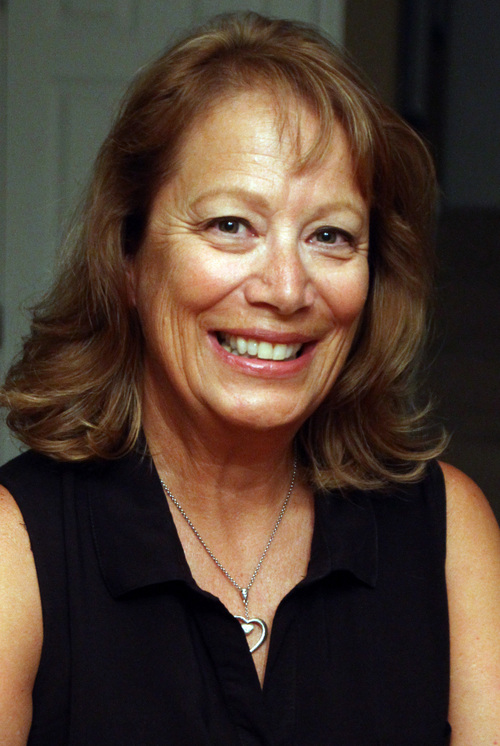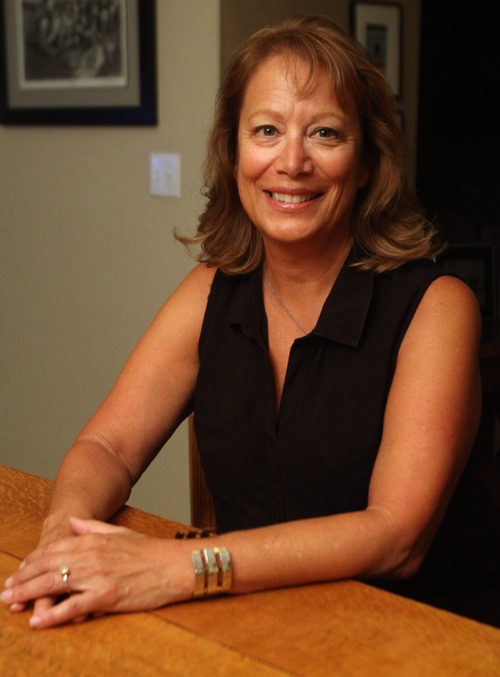This is an archived article that was published on sltrib.com in 2013, and information in the article may be outdated. It is provided only for personal research purposes and may not be reprinted.
Only twice in her three-year dance with breast cancer did Rosanne McLaughlin cry — when she was diagnosed and when, after a double mastectomy and chemotherapy, she looked in the mirror to see her femininity restored.
With Vinnie Myers' handiwork, McLaughlin said, "I looked whole again."
Myers isn't a doctor. But the Maryland-based tattoo artist's 3-D nipple tattoos have refined — some say redefined — breast cancer reconstruction.
Areola repigmentation is the final stage of a painful, protracted healing process; "the finishing touch," said McLaughlin, 52, who lives in Park City. It may seem a small thing, but for many it's a pride-restoring badge of survivorship, and Myers is the best in the business.
"He's amazing," said Leigh Neumayer, a breast surgeon at Huntsman Cancer Institute in Salt Lake City who refers patients to Myers. "The pictures you see on his website — [his tattoos] are that good, or better."
As breast cancer rates have risen, mortality rates have fallen due to advances in medicine. But even science has its limits.
Mastectomies are brutal, disfiguring surgeries. And while breast reconstruction has improved, fewer than 1 in 4 women with insurance choose to have it done.
It often requires multiple surgeries, carries the risk of infection and ends with varied results. And unless you're a candidate for so-called "skin sparing surgery," which preserves nipples, you're left with two colorless and scarred "Barbie" breasts, said McLaughlin.
"Barbie just had mounds," she said, "no nipples or anything."
—
'It means you're done' • McLaughlin was diagnosed in 2010 during a routine mammogram. She had just moved from Seattle to Utah and taken a job as a FedEx dispatcher.
When she got the results, she tearfully phoned her partner of 22 years, Michael, an airline pilot who was at work.
"I cried because I felt bad about having to tell him with him being so far away," she said. "But after that, it was like, 'OK, what do we have to do to get through this?' "
Breast cancer treatment decisions are personal, none of them easy, said McLaughlin, who is at peace with, but sometimes doubted, her decision to have her breasts removed.
Doctors in Seattle and at Huntsman gave her options, and at first she leaned toward a lumpectomy.
But her cancer was aggressive and had already spread outside the milk ducts. "I read so many stories on the Internet about women who had one breast removed and three or five years later it was in the other breast," she said. "I just thought, 'I don't want to do this again.' "
Like many women, she had her reconstructive surgery done during her mastectomy. After six months of chemotherapy, she was declared cancer-free.
But it took two years and two more surgeries to perfect her implants — including a failed attempt to surgically build nipples — before she was healed enough to get a tattoo.
It is the one procedure she never gave a second thought.
"I got used to looking at myself because they were that way for so long," McLaughlin said. "But that tattoo was always on my list of things to do. Just getting there was not fast enough, because it means you're done."
—
'Toughest people on the planet' • Cosmetic surgeons offer areola tattoos — but not with the realism that Myers delivers — and at two to three times the cost.
"You have to have a certain eye to achieve the results," said Myers, who charges $600 for two nipple tattoos and $400 for one at his shop just outside Baltimore.
Myers downplays his work as "basic Art 101," though few artists have been able to replicate it.
Vice magazine dubbed him the "Michelangelo of nipple tattoos," a moniker that "seems kind of silly," he said. "But I do not mind at all being that guy."
Myers learned tattooing while he served in Korea in the '80s as a U.S. Army medic. In 1991, he opened Little Vinnie's Tattoos outside Baltimore. He later expanded and offered everything from full-color sleeves to "I heart mom" mementos, but specialized in realistic portraits.
In 2001. he was approached by a plastic surgeon who asked if he would try nipple tattoos for breast-reconstruction patients.
"I wasn't prepared for the psychological impact on these women or on me," he said.
"For me, doing a small tattoo like that wasn't a big deal. But for these ladies, it's life changing. Prostate cancer is a serious thing for men, but the scars aren't in your face. These women have to look at that every day; they're the toughest people on the planet."
—
Intimate art • Plastic surgeons use one of three geometric formulas for deciding where to center the areola. They use vegetable-based inks that quickly fade and offer few pigments: pink, salmon and brown.
The result is a cartoonish, two-dimensional circle within a circle.
Myers looks at each breast as an "individual unit," hand-drawing the outline of the areola and nipple before filling them in with precisely mixed pigments.
"One breast is usually a different size and shape than the other. And you have to work with their scars because they don't retain the same amount of pigment," he said. "There's really no formula for what looks best."
Myers uses shadows and highlights to give the tattoos depth. He even adds the little bumps, or Montgomery glands.
Nipple tattoos must be done carefully to avoid rupturing the skin, said Myers."Often these women have lost all tissue except for a few millimeters of skin."
Patients initially found him through word of mouth.
"I was doing about 20 to 30 nipple tattoos a year," he said. But, in 2009, a client — a nurse who worked in the cancer ward at Johns Hopkins Hospital — blogged about him and "the dam broke," he said. "When she talks about breast cancer stuff, it's gospel, people listen. Word spreads like fever on all the forums."
By 2010, Myers said, he was thinking, "I don't know if I want to do this. It's taking over my whole practice." But his sister was diagnosed with breast cancer that year, a sign, he said, that "this is what I should be doing."
Today Myers does nipple tattoos exclusively — upward of 1,400 a year — and he's booked though January.
—
'Icing on the cake' • Clients come from around the world to see Myers at his Baltimore shop. He also schedules blocks of appointments at the elite Center for Restorative Breast Surgery in New Orleans, which can bill insurance directly.
Women who come to his shop have to pay cash, but can usually get their insurer to reimburse them.
McLaughlin found Myers on the Internet and got her tattoo in January.
"I would have gone wherever he was," she said. "It just happened to be in New Orleans, which made it more fun."
At her last follow-up appointment at Huntsman, doctors and nurses piled into the exam room to admire Myers' work.
Neumayer's clinic keeps a photo of her breasts on file as a reference of what's possible for other patients.
"We don't have anyone out here who is that good," said Neumayer, who learned about Myers from McLaughlin. "Initially I thought that sounds sketchy, but then I pulled up his website and emailed [a colleague in New Orleans]," she said. "I asked her, 'Should I worry about this guy?' She emailed back right away and said, 'No. This guy is amazing.' "
Tattoos have become more socially acceptable, and some women like the added "intrigue and mystique" of visiting Myers at his shop.
McLaughlin had never contemplated a tattoo before cancer and appreciated his professional demeanor. "It didn't hurt because I don't have many nerve endings left. It was just a really nice experience."
Neumayer describes it as "the icing on the cake." It can make the cake, or you can live without it.
"There are some women who decide not to do it," she said. "But I can tell you if we had someone like Vinnie here in town, and patients didn't have to travel that far, they'd practically all do it."





